written by Vivian Vande Velde, illustrated by Steve Björkman; Holiday House, 2019.
Twitch is curious, he’s spontaneous, and through his squirrely adventures, the young reader gains insight into science and human nature—between giggles.
Did I mention Twitch is a squirrel? Of course he’s a squirrel! What other character would fling himself headlong into such predicaments—and confidently and adroitly manage his way out of them?
Hold on to your backpacks and watch your step on the bus! This book for young independent readers is fun.
Squirrel in the Museum is Twitch’s third adventure. We first met the mischievous character in the highly popular, multiply nominated, state award-winning chapter book, 8 Class Pets + 1 Squirrel ÷1 Dog= Chaos, which was followed by the equally entertaining Squirrel in the House. In this most recent installment, Twitch sneaks his way onto a bus heading for a field trip to the science museum. Once there he wreaks havoc (unintentionally, of course), hides in a backpack, gets stuck in a girl’s hair and a locker, and manages to help solve a crime. Oh, and along the way, he visits some compelling museum exhibits—perfect for discussing further after reading this delightful and engaging misadventure.
Once we believe in ourselves, we can risk curiosity, wonder, spontaneous delight, or any experience that reveals the human spirit. –e. e. cummings
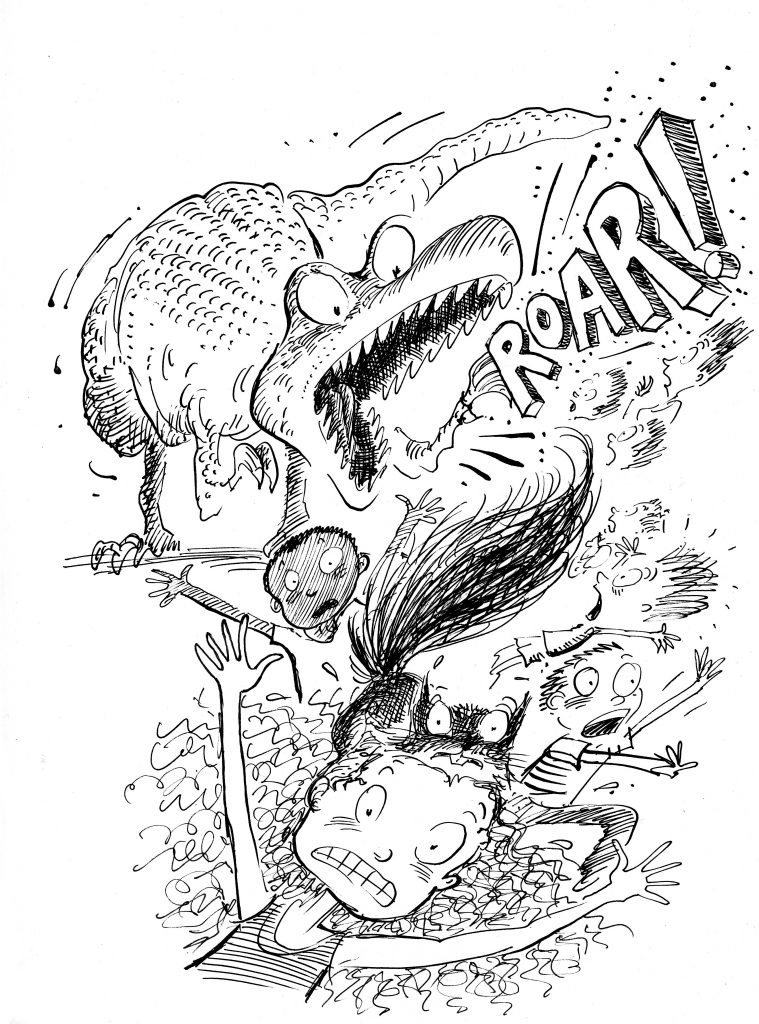
Illustration © Steve Björkman
Why This Book? Why will this book matter to kids?
Squirrel in the Museum is fun to read independently or as a read-aloud. Children will witness the positive traits in Twitch’s personality as well as the comedic. Even though he is constantly getting into trouble, this rascal is curious, persistent, confident, and well-meaning. Readers will observe kindness in the actions of minor characters, especially the endearing student who looks out for Twitch and comes to his aid in a desperate moment. Young readers will also learn about science and museums by way of the action-packed story. And that all gets accomplished in an expertly written and wonderfully illustrated early chapter book of 105 pages.
Grade level: 2-4
Social-Emotional Learning Themes: curiosity, kindness, persistence, confidence; honesty; integrity
Content Area Connections: Science: museums; dinosaurs; planets and the solar system; Mars rovers; the Foucault pendulum and the earth’s rotation; the Van de Graaff generator, the plasma globe and electric charges; air pressure and the Bernoulli air pressure table; and…Fig Newtons! (They’re nutritious, right? And nutrition is science…)
Using This Book In the Classroom
Hit the Ground Running
Ready Resources for Educators, Homeschoolers, and Parents
- Vivian Vande Velde’s website (Scroll down to the MORE STUFF section for links to sites where students can learn more about the exhibits Twitch sees when he visits the fictional Galileo Museum and Science Center)
- Online teacher guides are also available for the first two books in the series:
Write Away!
Ideas to prompt writing
Have students locate and reread excerpts of the story in which readers are treated to Twitch’s view of the various items exhibited in the science museum. Note how the author uses detail to help the reader see the item from Twitch’s point of view. Next, ask students to identify something else Twitch might come upon in a science museum and write about it from his viewpoint. This would be especially meaningful following a trip to a museum. However, if that’s not possible, consider a virtual museum tour as the idea starter for this writing exercise. Have students share their writing. Can others in the group guess what Twitch is experiencing in each writing piece?
Poetry Break
Related poetry to recite before or following the reading of this book
Poetry breaks fit perfectly into brief moments in the day—from opening or closing the daily morning meeting to lining up for lunch; from zipping up backpacks and jackets to transitioning from one subject to the next. Reading a poem typically takes less than a minute, yet it can introduce or reinforce a concept, celebrate language, exemplify rhythm, enhance vocabulary, expand understanding, summon a giggle or initiate reflection. And poetry soothes the spirit.
Poetry collections suggested for use with Squirrel in the Museum:
- The Day the Universe Exploded My Head: Poems to Take You into Space and Back Again by Allan Wolf, illustrated by Anna Raff
- Science Verse by Jon Scieszka, illustrated by Lane Smith
- Here’s What You Do When You Can’t Find Your Shoe: Ingenious Inventions for Pesky Problems, written by Andrea Perry, illustrated by Alan Snow
And Then There’s This…
Enrichment activities, related books, online resources, crafts, and ideas for further study
- Take Vivian’s advice (see below) and plan a field trip to a nearby science museum.
- Engage in Reader’s Theatre using Newton and Galileo’s conversations in the book.
- Delve deeper into the various exhibits Twitch experienced in the science museum. Begin with Newton and Galileo’s explanations. See suggested links on Vivian’s website. Research in teams to learn more. Share reports orally.
About the Author 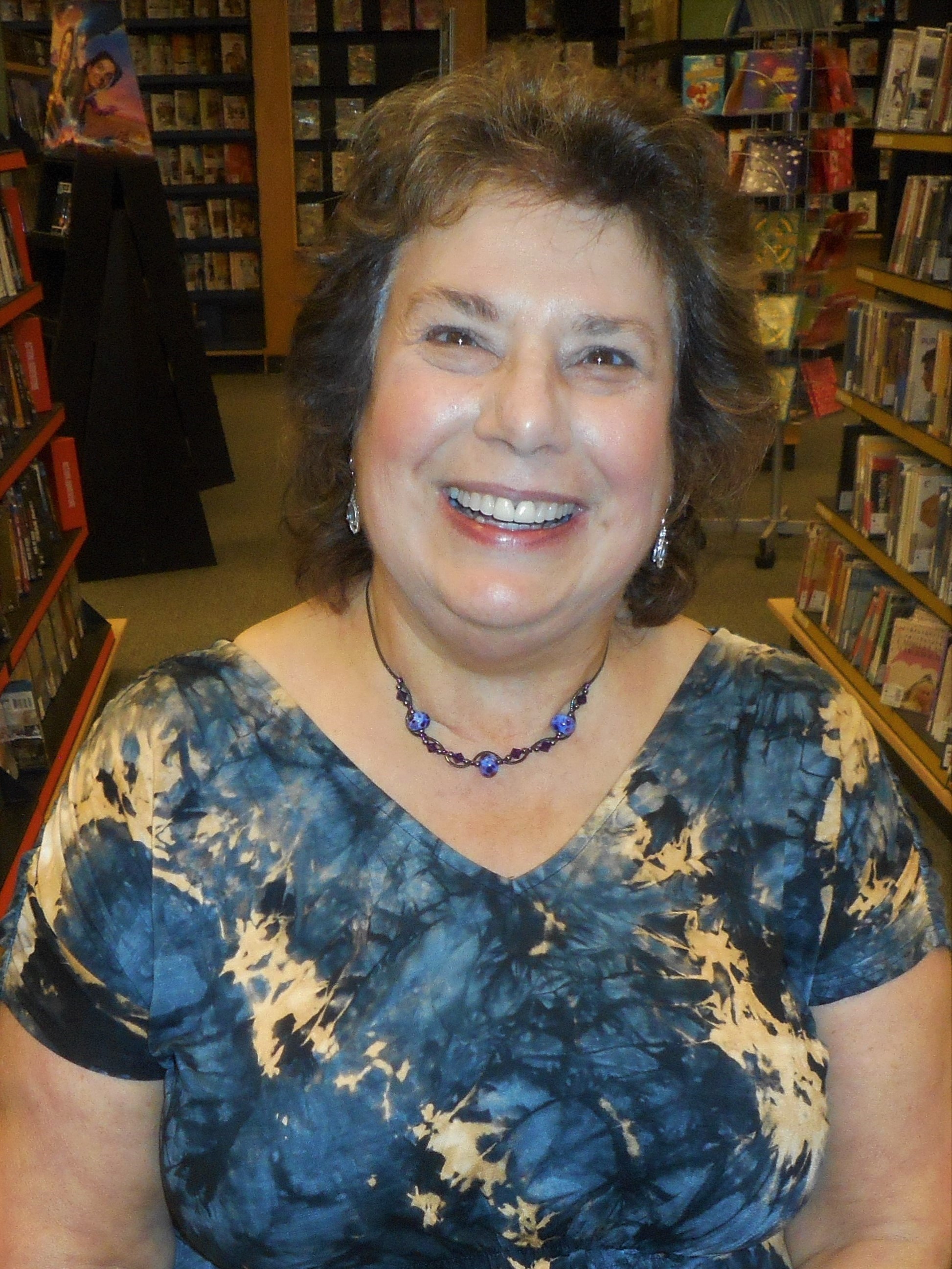
Squirrel in the Museum is Vivian Vande Velde’s 39th published book. She has written one picture book, several early readers, and short story collections for children and teens. The majority of her work is chapter books for children ages 8 – 12 and young adult novels. Most of these books have been fantasy (including ghost stories—both contemporary and historical settings—and fairy tales). Vande Velde considers herself “fortunate to have had Trina Schart Hyman illustrate her debut novel, A Hidden Magic.” Besides having her books appear on numerous student-selected state reading lists, Vande Velde won the Anne Spencer Lindbergh Prize in Children’s Literature for Heir Apparent, the Mystery Writers of America’s Edgar Award for Never Trust a Dead Man, and the Empire State Award for Excellence in Literature for Young People for her body of work. (She admits she cannot cite this achievement without giggling.) For more information, visit Vivian here.
Q&A with Vivian Vande Velde
Vivian graciously responded to a few questions about Squirrel in the Museum and her creative process.
Judy Bradbury: How did you come to write this book? What kernel seeded its creation?
Vivian Vande Velde: We have squirrels in our back yard who like to visit our bird feeders. While my husband considers them a nuisance, I admire their persistence and ingenuity. I wrote one story (8 Class Pets + 1 Squirrel ÷ 1 Dog = Chaos) about a squirrel named Twitch who is chased by a dog into a school after hours, and how the school’s class pets work together to save him. I only intended to write the one story, but I loved the illustrations by Steve Björkman. I’ve never met him as he lives in California while I’m in upstate NY—so it was the editor who teamed us up. Still, I tracked him down on the internet and told him what a great job he’d done with showing the characters’ personalities—not to mention how I admired the energy and great sense of chaos. He kindly complimented my story and said he’d like to illustrate another Twitch story…
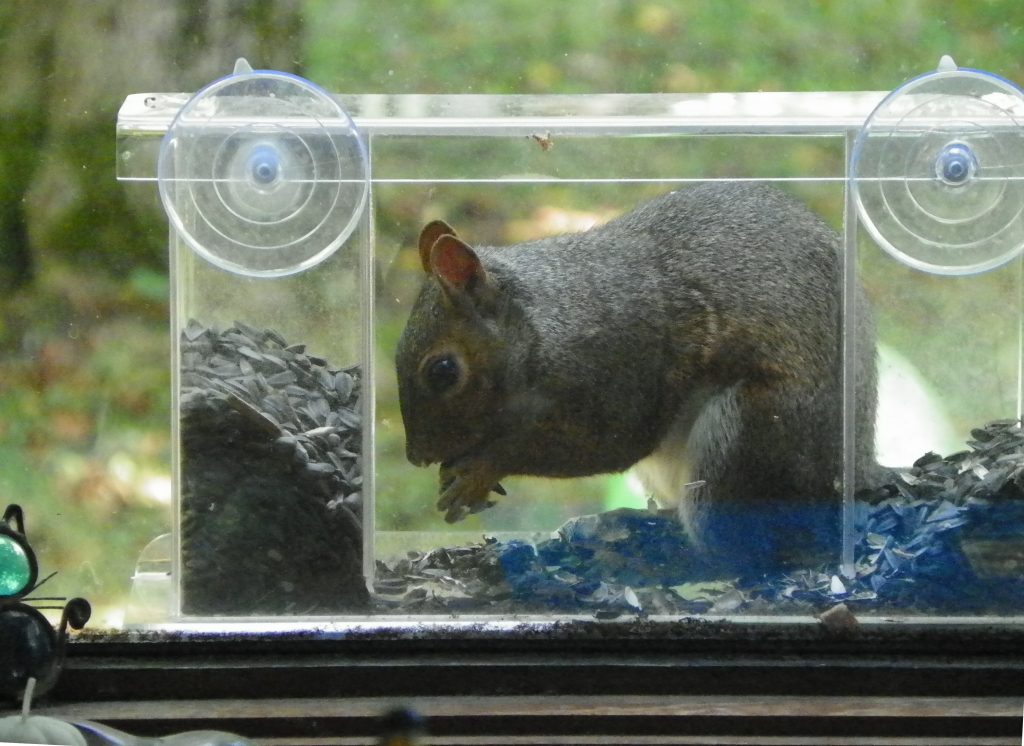
Photo by Vivian Vande Velde
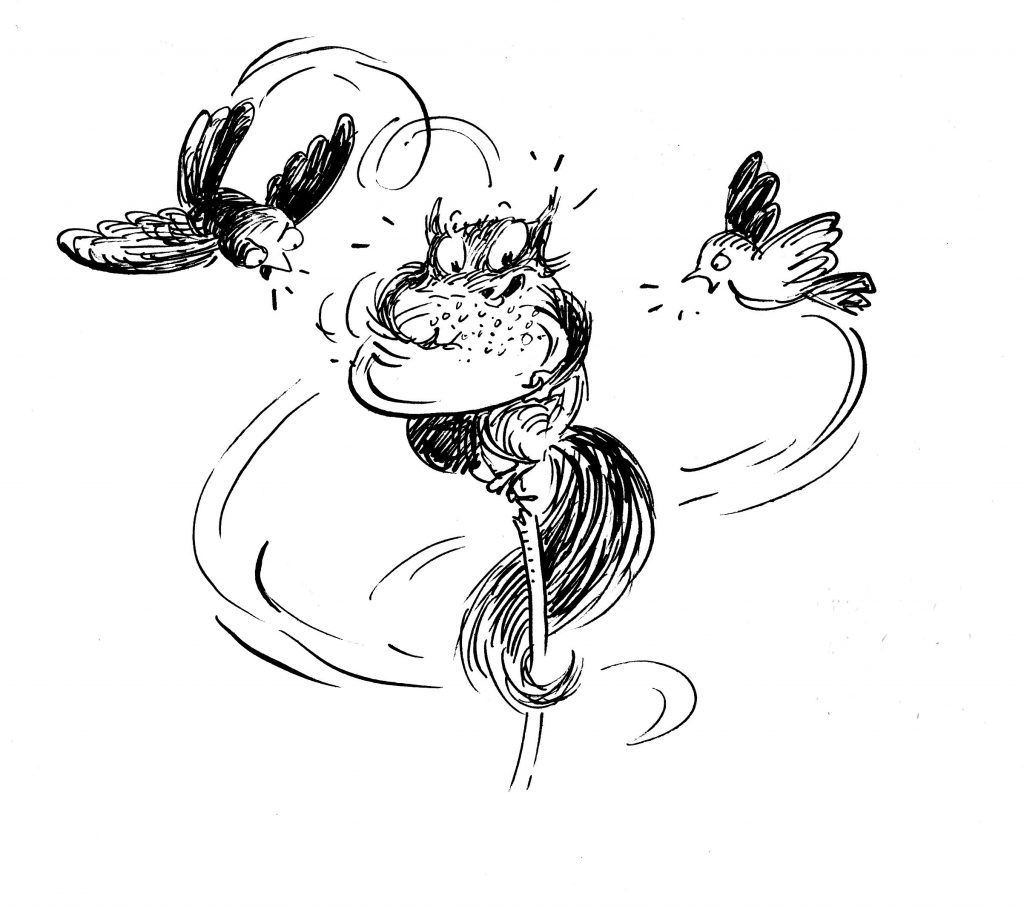
Twitch at the bird feeder; illustration © Steve Björkman
JB: Tell about one hurdle you experienced in the creation of Squirrel in the Museum or provide a memorable (or humorous!) anecdote related to the making of this book.
VVV: I am not naturally a scientifically-minded person, though my husband and I do like to visit museums. I had a sense of the kinds of exhibits I thought my story’s museum should have, based on some of the kid-friendly exhibits I’ve seen. That was the easy part. Then I had to do research to find out what was actually going on, scientifically, with all those exhibits.
JB: How do you see your book connecting to curriculum?
VVV: Although I never state the age or grade of the class of students Twitch takes his field trip with, I pictured them as being 3rd graders, so I concentrated on science concepts for that level. (And to be honest, that’s about my level of understanding, too.) Twitch, of course, doesn’t have a clue about anything. (He thinks the plasma ball has lightning in it.) So in the last chapter, Galileo and Newton, the science lab geckos, explain things to the reader. Anybody checking out the Squirrel in the Museum page of my website can click on links to see videos explaining even further.
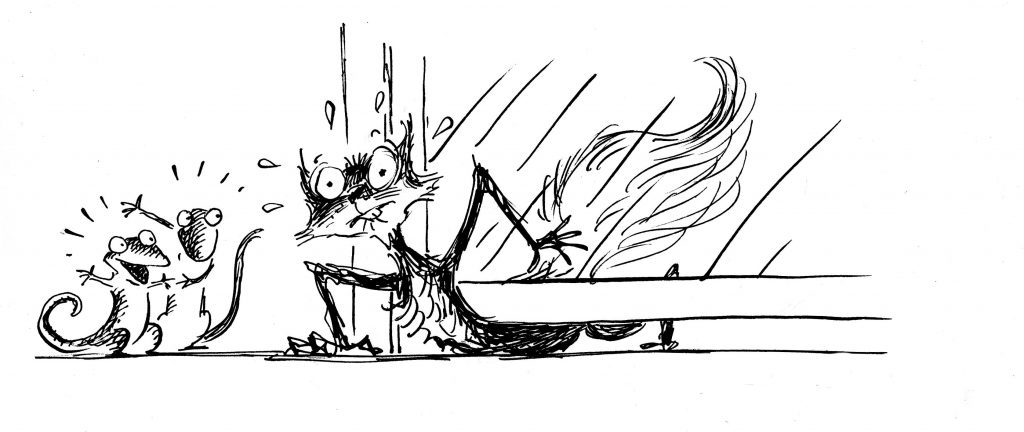
Illustration © Steve Björkman
JB: Twitch gets himself into one batch of trouble after another on the field trip to the science museum. Some of the children and adults are afraid of him or annoyed with him, but one boy likes Twitch. He befriends and protects the mischievous squirrel—and feeds him peanuts. Along with big doses of humor, you reveal science facts and friendship facts. What friendship facts are most important for kids to know?
VVV: All over Facebook lately I’ve been seeing the saying: “In a world where you can be anything, be kind,” and I wish more people would take that to heart. There are many things you can admire about people and that can draw you into a friendship with them, but kindness is the strongest tie.
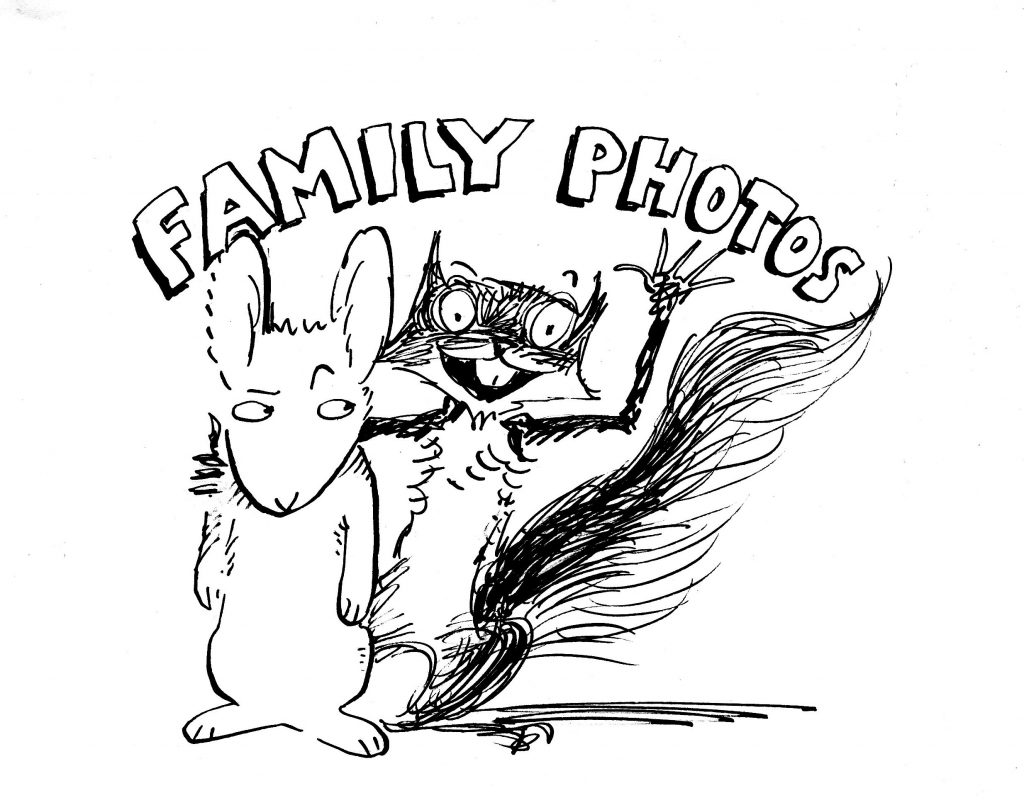
Illustration © Steve Björkman
JB: What did you learn from creating this book?
VVV: The book is dedicated to the members of my writers groups, including my friend Dr. Carol Johmann, who checked my science before the book was published, and—as I wrote in the dedication—“explained (patiently) how an airplane flying is science, not magic.” When Carol saw the dedication, she said, “I knew you knew flying wasn’t magic all along.” She gives me more credit than I deserve.
JB: What would surprise readers to learn about you or about the creation of this book?
VVV (1): There’s one more step in the creation of this book beyond what I said at the beginning of this interview. After 8 Class Pets + 1 Squirrel ÷ 1 Dog = Chaos was published, a reading teacher came up to me at the Rochester Children’s Book Festival. She told me her school’s reading club had read the book and their favorite characters were the always-wanting-the-last-word brother geckos, Galileo and Newton, who live in the science lab.
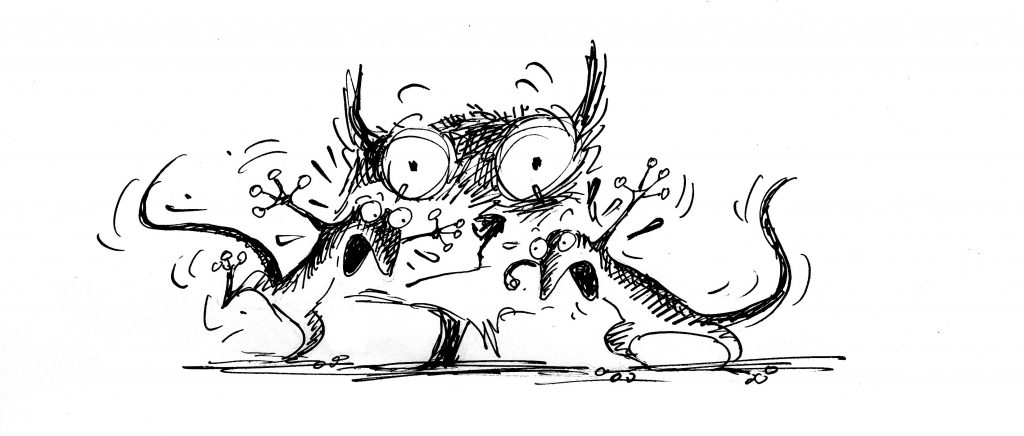
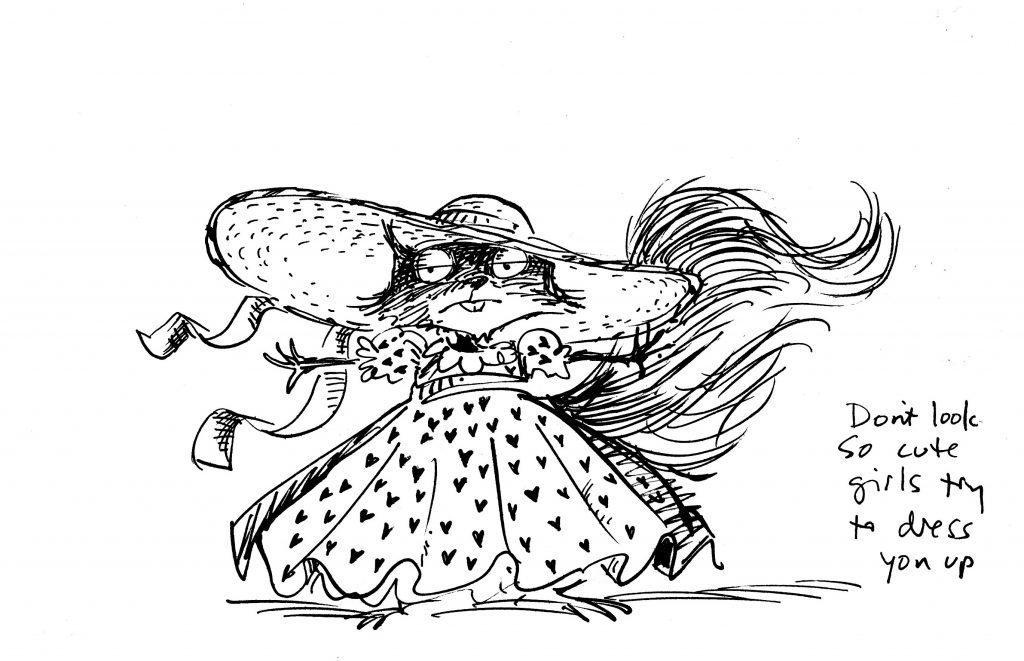
Illustration © Steve Björkman
JB: What do you hope readers will take away from your book?
VVV: I hope they will be entertained, and will have learned a few facts effortlessly.
JB: What is one question you wish I had asked, and what is your answer?
VVV: I think you’ve asked very good and thoughtful questions. If you were going to ask one more, maybe it should be: Is there a real Galileo Museum and Science Center that readers can visit? The answer is: Not exactly. But there is probably a museum near where you live that has at least some of the exhibits Twitch and the children see. The people who run museums work hard to make their exhibits something that people of all ages can enjoy and learn from. Ask your teacher or parents to look up what museum is closest to you.
Oooh, and here’s another: Is illustrator Steve Björkman brilliant or what?!
Steve Björkman has illustrated over 100 children’s books, some of which he has also written. For more information on his work, visit Steve here.
Book Giveaway!
Subscribers who leave a comment will be entered into a drawing to win a copy of Squirrel in the Museum. A winner will be chosen randomly and announced when the next review is posted.

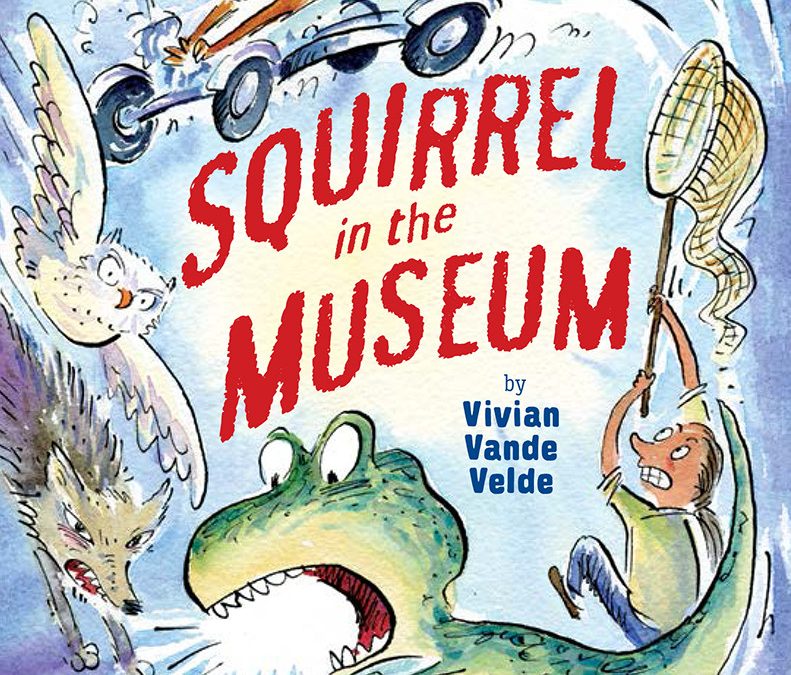
Judy, congratulations on a fantastic blog! I love every section and cant wait for future posts!!!
Judy! This is great! It’s so interesting to hear the behind the scenes with Vivian. 🙂
Judy,
Love all of Vivian’s books and your insights, ideas, and resources are invaluable. I look forward to many more interesting posts.
This is wonderful, Judy! I absolutely love the peek you give us into Vande Velde’s creative process and your concrete, practical suggestions for classroom and curricular connections. Looking forward to more!
Judy,
I love everything you have done with your blog! And your author interview was right on… interesting and informative. I can’t wait to purchase all the Twitch books to share with my granddaughters and my students! ❤